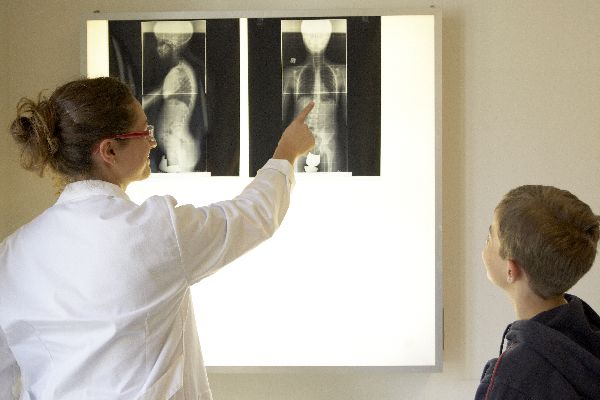Juvenile scoliosis: what it is and how it is treated. The Isico experience
Juvenile scoliosis is defined by an age at diagnosis of between 4 and 9 years; the form appearing earlier than this is termed infantile, while the one detected later is referred to as adolescent scoliosis. The juvenile form accounts for between 12% and 21% of all cases of idiopathic scoliosis occurring in youngsters.
Exercises and bracing can radically alter the natural history of juvenile scoliosis, stabilising the curvature (which tends to worsen markedly during the pubertal growth spurt, i.e. between the ages of 10 and 13 years), preventing further worsening, maintaining (after growth is complete) the correction achieved, and avoiding the need for surgery in the most severe cases. Adopting, a priori, an aggressive approach to the treatment of scoliosis can be counterproductive, as it can lead to a risk of over-treating the condition, and therefore reducing the youngster’s quality of life.
It is incorrect to say that juvenile scoliosis is always more aggressive than the adolescent form; in both, there probably exist rare cases of curves with a high potential to deteriorate. However, there is no doubt that, both in adolescent and in juvenile cases, the period of greatest risk is the pubertal growth spurt, which naturally favours a progression of scoliotic curves. It is therefore important to seek the support of a team of experts able to provide correct clinical and radiographic monitoring of the youngster’s conditions; the therapeutic team must also be committed to ensuring that the patient always receives the treatment that, for the same level of effectiveness, will least affect his/her quality of life.
The natural history of juvenile scoliosis teaches us that the curvature will worsen to more than 50°-60°, meaning that affected individuals are destined to require surgery. This view is so widespread that, as the lack of relevant literature shows, very little attention has been paid to the potential of conservative rehabilitation treatment in this form.
Very often, it is deemed best to “wait and see” what happens after the pubertal growth spurt. However, on the basis of the common knowledge that scoliosis tends to worsen in puberty, we argue that conservative rehabilitation treatment in juvenile cases can potentially produce positive results, which can be maintained after growth is complete.
An Isico study published a few years ago, shows precisely this. The article, entitled “In favour of the definition “adolescents with idiopathic scoliosis”: juvenile and adolescent idiopathic scoliosis braced after ten years of age, [1] do not show different end results”, reports, in particular, that 92% of the patients studied got through adolescence without needing surgery. The study involved two groups. The first group comprised 27 youngsters with a diagnosis of juvenile scoliosis (based on clear X-ray evidence of scoliosis before the age of 10 years), who had started treatment after the age of 10 years. The second group was made up of 45 patients with a diagnosis of adolescent scoliosis. The patients in both groups presented curves of between 25° and 45°. The results obtained at the end of the treatment (bracing in all cases) were found to be comparable between the two groups.
“The study showed that it is possible to contain the natural tendency of scoliotic curves to worsen during puberty” – says Isico physiatrist Claudia Fusco – “What is more, the improvement was found to be greater in those cases whose treatment was started earlier, and was more challenging because of the severity of the curvature (greater than 30°). Take, for example, the case of one patient, a girl, who we had been treating solely with exercises ever since she first came to us as a child with mild scoliosis. Her bracing treatment began with a Cheneau brace and then, as she grew, this was replaced first with a Lyon and then a Sforzesco one; meanwhile, her brace wearing time was gradually increased from 12 to 18 hours per day. The progression was greatest at the age of 12 years, after which her condition stabilised, while the severity of the curve has decreased. At the age of 16 years, this patient had a 34° curve, down from a peak of 41°: a great success!”




Leave a Reply
Want to join the discussion?Feel free to contribute!